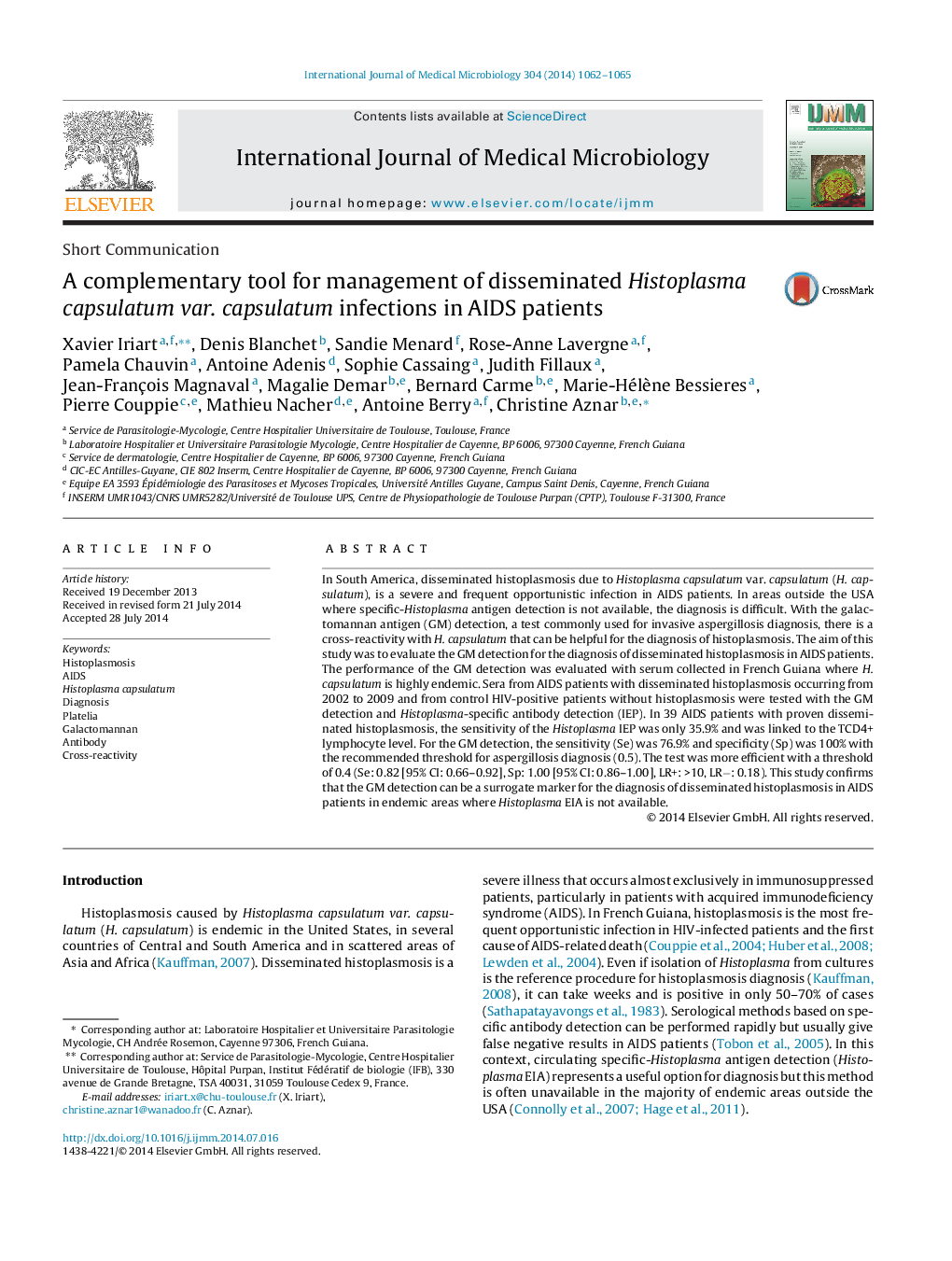| Article ID | Journal | Published Year | Pages | File Type |
|---|---|---|---|---|
| 8385492 | International Journal of Medical Microbiology | 2014 | 4 Pages |
Abstract
In South America, disseminated histoplasmosis due to Histoplasma capsulatum var. capsulatum (H. capsulatum), is a severe and frequent opportunistic infection in AIDS patients. In areas outside the USA where specific-Histoplasma antigen detection is not available, the diagnosis is difficult. With the galactomannan antigen (GM) detection, a test commonly used for invasive aspergillosis diagnosis, there is a cross-reactivity with H. capsulatum that can be helpful for the diagnosis of histoplasmosis. The aim of this study was to evaluate the GM detection for the diagnosis of disseminated histoplasmosis in AIDS patients. The performance of the GM detection was evaluated with serum collected in French Guiana where H. capsulatum is highly endemic. Sera from AIDS patients with disseminated histoplasmosis occurring from 2002 to 2009 and from control HIV-positive patients without histoplasmosis were tested with the GM detection and Histoplasma-specific antibody detection (IEP). In 39 AIDS patients with proven disseminated histoplasmosis, the sensitivity of the Histoplasma IEP was only 35.9% and was linked to the TCD4+ lymphocyte level. For the GM detection, the sensitivity (Se) was 76.9% and specificity (Sp) was 100% with the recommended threshold for aspergillosis diagnosis (0.5). The test was more efficient with a threshold of 0.4 (Se: 0.82 [95% CI: 0.66-0.92], Sp: 1.00 [95% CI: 0.86-1.00], LR+: >10, LRâ: 0.18). This study confirms that the GM detection can be a surrogate marker for the diagnosis of disseminated histoplasmosis in AIDS patients in endemic areas where Histoplasma EIA is not available.
Related Topics
Life Sciences
Biochemistry, Genetics and Molecular Biology
Biochemistry, Genetics and Molecular Biology (General)
Authors
Xavier Iriart, Denis Blanchet, Sandie Menard, Rose-Anne Lavergne, Pamela Chauvin, Antoine Adenis, Sophie Cassaing, Judith Fillaux, Jean-François Magnaval, Magalie Demar, Bernard Carme, Marie-Hélène Bessieres, Pierre Couppie, Mathieu Nacher,
